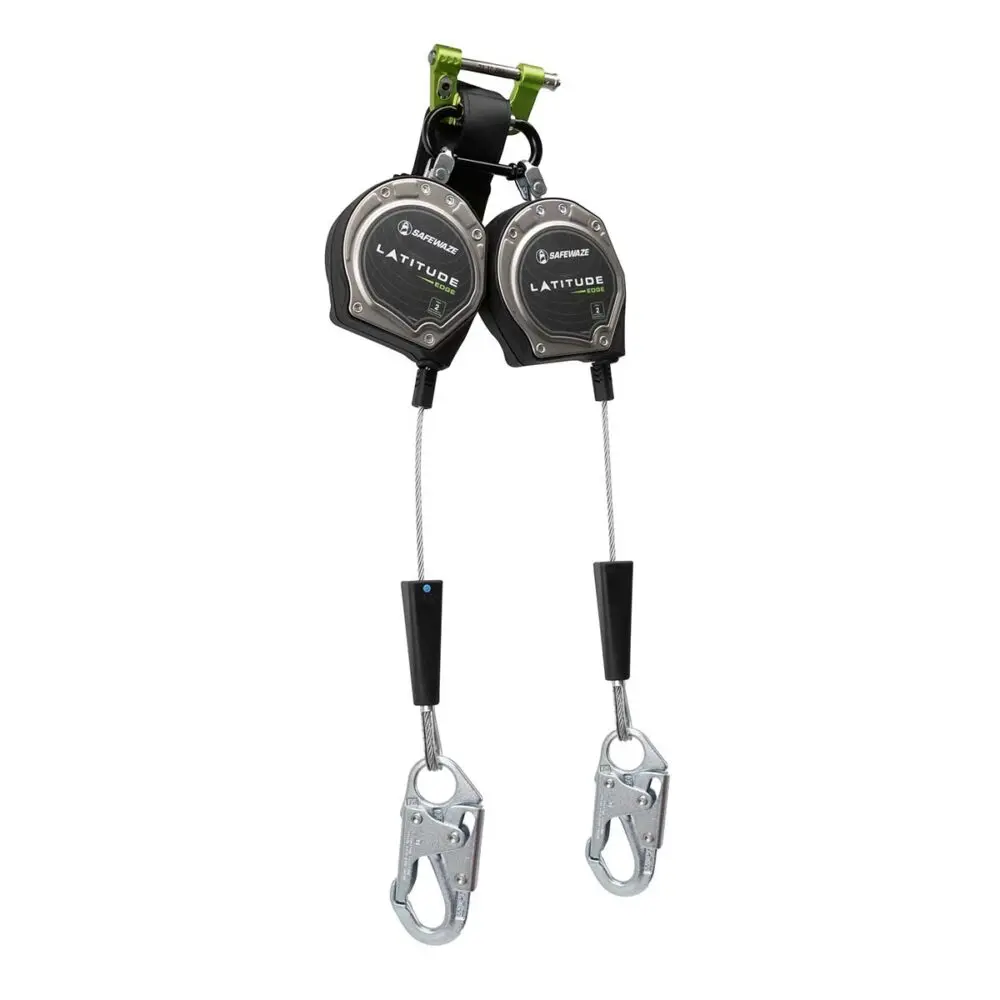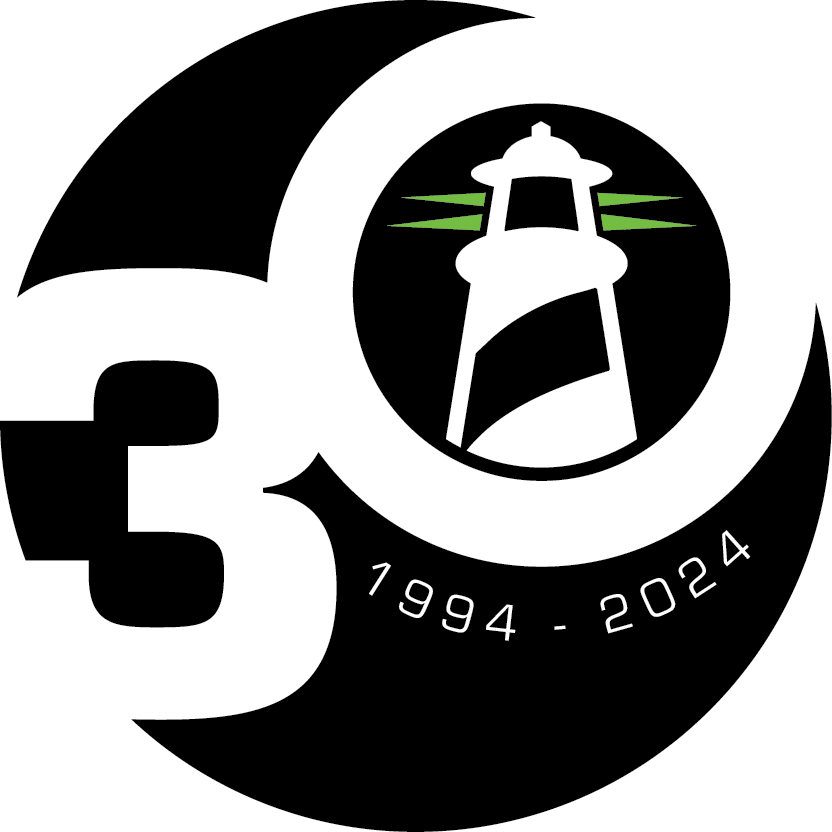Utilizing components designed to be used together as a system ensures component compatibility. However, it is not uncommon for companies to source products from more than one vendor based upon criteria such as availability, price or durability. Safewaze products, like those of other manufacturers, are tested in accordance with all relevant OSHA regulations and ANSI standards. Our products may be used in conjunction with equipment from other manufacturers when that use is approved by the competent person on-site in accordance with stated instructions.
Utilizing components designed to be used together as a system ensures component compatibility. However, it is not uncommon for companies to source products from more than one vendor based upon criteria such as availability, price or durability. Safewaze products, like those of other manufacturers, are tested in accordance with all relevant OSHA regulations and ANSI standards. Our products may be used in conjunction with equipment from other manufacturers when that use is approved by the competent person on-site in accordance with stated instructions.
ANSI outlines product compatibility in Z359.6-2016, “All directly connected components of an active fall protection system shall be compatible, such that they perform as intended and cannot unintentionally disengage on their own during the use of the system or during a fall event.”
Utilizing components designed to be used together as a system ensures component compatibility. However, it is not uncommon for companies to source products from more than one vendor based upon criteria such as availability, price or durability. Safewaze products, like those of other manufacturers, are tested in accordance with all relevant OSHA regulations and ANSI standards. Our products may be used in conjunction with equipment from other manufacturers when that use is approved by the competent person on-site in accordance with stated instructions.
ANSI outlines product compatibility in Z359.6-2016, “All directly connected components of an active fall protection system shall be compatible, such that they perform as intended and cannot unintentionally disengage on their own during the use of the system or during a fall event.”
Utilizing components designed to be used together as a system ensures component compatibility. However, it is not uncommon for companies to source products from more than one vendor based upon criteria such as availability, price or durability. Safewaze products, like those of other manufacturers, are tested in accordance with all relevant OSHA regulations and ANSI standards. Our products may be used in conjunction with equipment from other manufacturers when that use is approved by the competent person on-site in accordance with stated instructions.
OSHA frames it this way, “Individual components in a fall arrest or positioning device system may be made by different manufacturers as long as they meet the compatibility requirements.” They go on to callout both the evaluation by a competent person and the importance of adhering to manufacturer guidelines.
ANSI outlines product compatibility in Z359.6-2016, “All directly connected components of an active fall protection system shall be compatible, such that they perform as intended and cannot unintentionally disengage on their own during the use of the system or during a fall event.”
Utilizing components designed to be used together as a system ensures component compatibility. However, it is not uncommon for companies to source products from more than one vendor based upon criteria such as availability, price or durability. Safewaze products, like those of other manufacturers, are tested in accordance with all relevant OSHA regulations and ANSI standards. Our products may be used in conjunction with equipment from other manufacturers when that use is approved by the competent person on-site in accordance with stated instructions.
OSHA frames it this way, “Individual components in a fall arrest or positioning device system may be made by different manufacturers as long as they meet the compatibility requirements.” They go on to callout both the evaluation by a competent person and the importance of adhering to manufacturer guidelines.
ANSI outlines product compatibility in Z359.6-2016, “All directly connected components of an active fall protection system shall be compatible, such that they perform as intended and cannot unintentionally disengage on their own during the use of the system or during a fall event.”
Utilizing components designed to be used together as a system ensures component compatibility. However, it is not uncommon for companies to source products from more than one vendor based upon criteria such as availability, price or durability. Safewaze products, like those of other manufacturers, are tested in accordance with all relevant OSHA regulations and ANSI standards. Our products may be used in conjunction with equipment from other manufacturers when that use is approved by the competent person on-site in accordance with stated instructions.
Yes – provided [1] a competent person on-site has overseen the entire system to ensure compatibility, and [2] use of each component meets the manufacturer requirements for its individual use [3] The manufacturer’s instructions are read, understood, and followed for all components and subsystems in the Personal Fall Arrest System (PFAS).
OSHA frames it this way, “Individual components in a fall arrest or positioning device system may be made by different manufacturers as long as they meet the compatibility requirements.” They go on to callout both the evaluation by a competent person and the importance of adhering to manufacturer guidelines.
ANSI outlines product compatibility in Z359.6-2016, “All directly connected components of an active fall protection system shall be compatible, such that they perform as intended and cannot unintentionally disengage on their own during the use of the system or during a fall event.”
Utilizing components designed to be used together as a system ensures component compatibility. However, it is not uncommon for companies to source products from more than one vendor based upon criteria such as availability, price or durability. Safewaze products, like those of other manufacturers, are tested in accordance with all relevant OSHA regulations and ANSI standards. Our products may be used in conjunction with equipment from other manufacturers when that use is approved by the competent person on-site in accordance with stated instructions.
Yes – provided [1] a competent person on-site has overseen the entire system to ensure compatibility, and [2] use of each component meets the manufacturer requirements for its individual use [3] The manufacturer’s instructions are read, understood, and followed for all components and subsystems in the Personal Fall Arrest System (PFAS).
OSHA frames it this way, “Individual components in a fall arrest or positioning device system may be made by different manufacturers as long as they meet the compatibility requirements.” They go on to callout both the evaluation by a competent person and the importance of adhering to manufacturer guidelines.
ANSI outlines product compatibility in Z359.6-2016, “All directly connected components of an active fall protection system shall be compatible, such that they perform as intended and cannot unintentionally disengage on their own during the use of the system or during a fall event.”
Utilizing components designed to be used together as a system ensures component compatibility. However, it is not uncommon for companies to source products from more than one vendor based upon criteria such as availability, price or durability. Safewaze products, like those of other manufacturers, are tested in accordance with all relevant OSHA regulations and ANSI standards. Our products may be used in conjunction with equipment from other manufacturers when that use is approved by the competent person on-site in accordance with stated instructions.



